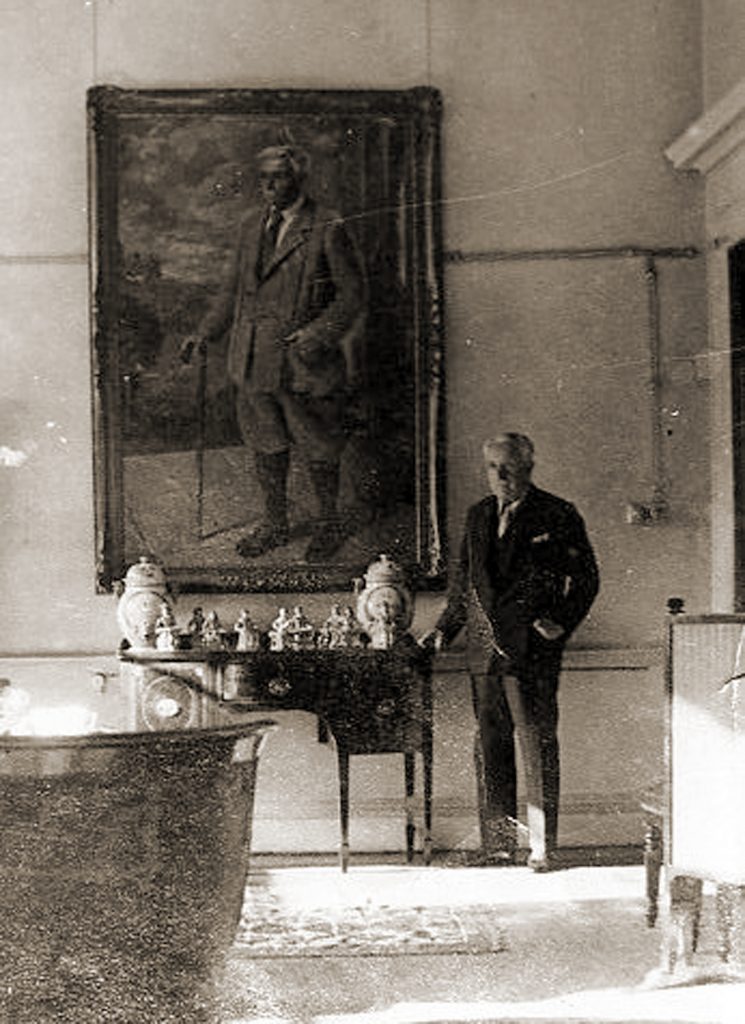
Philip Napier Miles in the dining room, now the Canaletto Room, at Kings Weston house
This year Sea Mills estate celebrates its Centenary. The new suburb was built on land owned by Philip Napier Miles, and, although not his project, saw the realisation of a long-held ambition to create a garden village.
It’s not clear what first inspired PN Miles to dream of developing his lands on along the revolutionary principles of the Garden City Movement, but he was an early adopter. Perhaps he’d read Sir Ebenezer Howard’s ‘To-morrow: a Peaceful Path to Real Reform’ that set out the ideology of uniting the benefits of open green space with new urbanization and industry. If he read it in its first year of publication, in 1898, he was quick to respond as the architectural character of housing around Avonmouth changed almost overnight, from traditional Victorian terraces, to new model housing in the Arts and Crafts style still found along Green Lane.
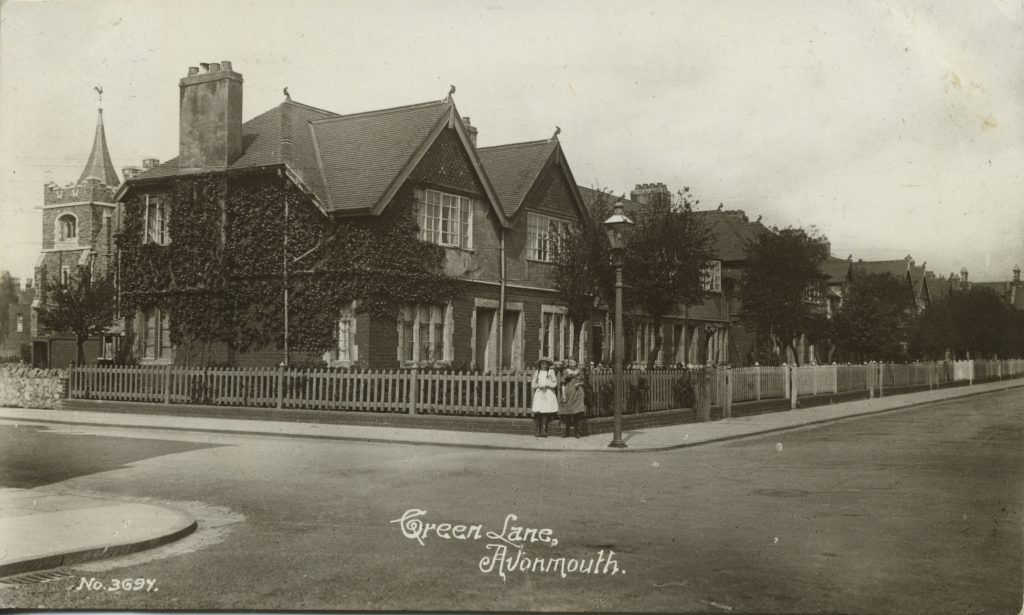
Green Lane, Avonmouth. Designed 1898 and seen here in about 1910
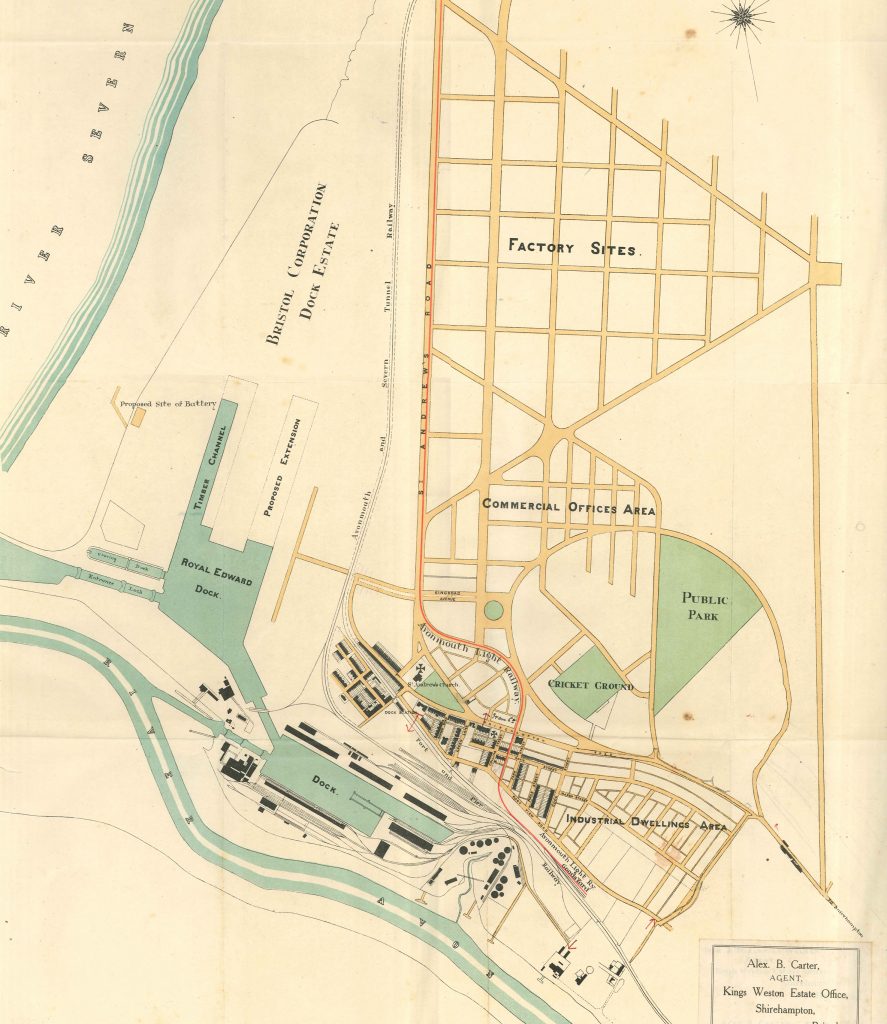
The 1903 plan to turn Napier Miles’ estate around Avonmouth into a new Garden City
The idea quickly expanded and in March 1903 Miles published his grandiose plans for developing thousands of acres of land around Avonmouth along Garden City ideals. This was the same year as the foundation of Letchworth Garden City, the first realised town plan using the same principles, and the architecture around Avonmouth is still strongly reminiscent of the more famous settlement.
Although heavily marketed the Avonmouth city project never really gained traction. Investors were reluctant to commit to a damp, wet, floodplain that was only poorly connected to the city centre of Bristol. However the wide streets, and elaborate Edwardian architecture suggest at the aspirations Miles had.
Even as Avomouth was undergoing tentative development another opportunity arose for Miles to achieve his ambition; that being the Bristol Garden Suburb Ltd. Miles was approached in 1909 by promoters of a smaller scale development inspired by the garden-city principles that would provide pioneering artisan and workers housing with high quality living conditions and generous gardens front and back. Miles sold a portion of his estate off Station Road in Shirehampton at extremely reduced cost to see if the experiment would succeed, and gave the option to acquire more land if it was a success. The project was realised and although only 44 houses had been built by 1913 it remained incomplete. Today the garden village can best be seen around Passage Leaze where it has been surrounded with later council estate development that muddies its real significance.
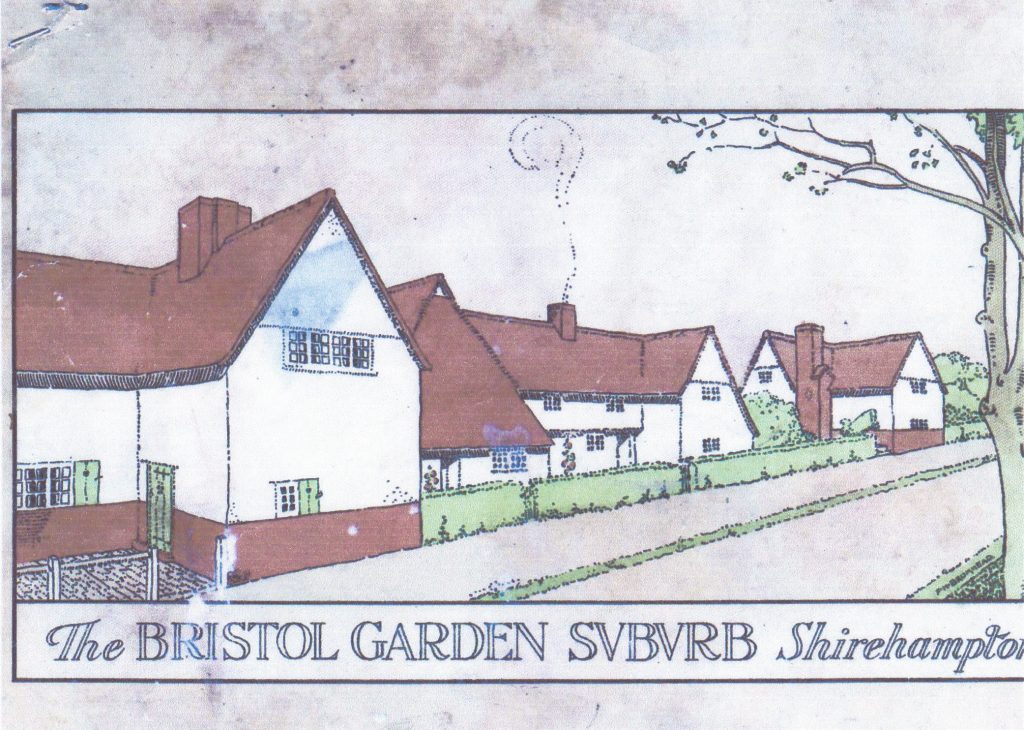
Houses on Springfield Avenue from the Bristol Garden Suburb Ltd prospectus.
Miles remained committed to developing a much larger garden suburb on his own terms and, in 1918 a new plan was formed to develop 350 acres of the Kings Weston estate below Penpole Wood and where Lawrence Weston is today; 60 acres of this were scheduled to be open green space. A 1919 newspaper report describes the visit of the Garden Cities and Town Planning Association when Miles took the opportunity to describe his plans and the progress then being made on them. The first public building was to be a Trades Hall for the use of trade unionists, new education facilities, communal laundries, baths, swimming pools a main avenue of two miles in length, and a shopping centre were to incorporate elements of the landscaped parkland below Kings Weston house.
Sadly there aren’t any surviving plans for Miles’s ambitious scheme, but part of it was realised in the form of about 100 houses below Penpole Point, around Bean Acre and the western ends of Old Quarry Road and Kings Weston Aveunue; the latter being the commencement of the 2-mile long avenue planned. The works were undertaken by the Ministry of Munitions and it appears that Miles had limited control of the appearance of their work driven by the wartime need to supply workers housing for the Government zinc smelting works and the Mustard Gas factory at Chittening.
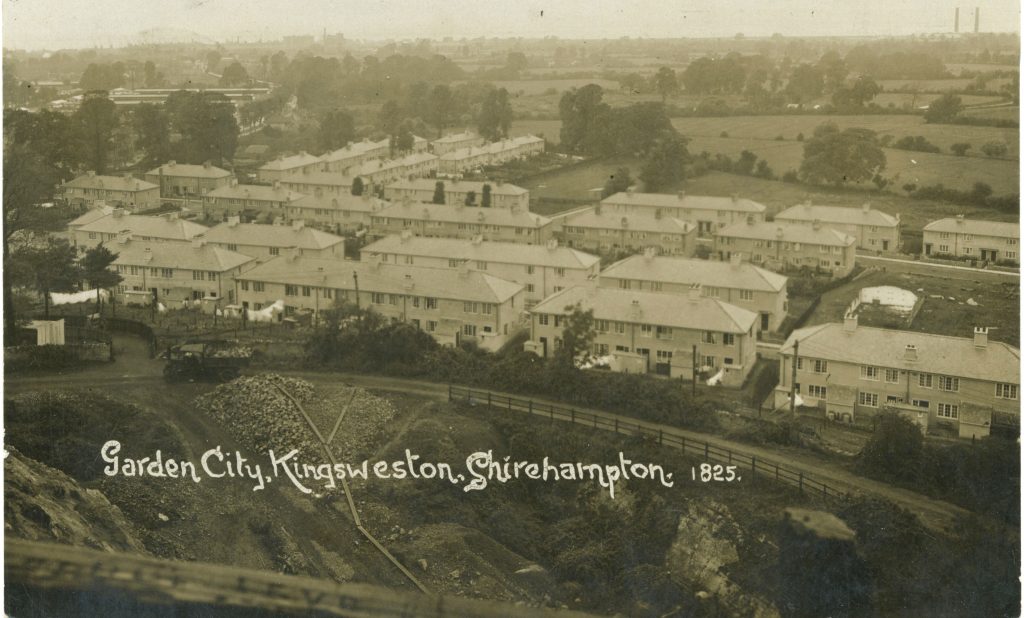
Kingsweston Garden Village seen from Penpole Point Above. Note the quarry that was brought back into use for the construction.
It’s not known why the Kings Weston Garden City faltered after such grand plans, especially following the 1919 Housing and Town Planning Act, promoted by politician and doctor Christopher Addison, gave Local Authorities the power and money to act to help resolve a chronic housing shortage. Instead Bristol Corporation focussed attention on another large tract of Miles’s estate: Sea Mills. Miles bought into the idea and he happily negotiated with the Council to sell the 205 Acres of land required, but with three clear provisos that ensured he retained considerable control of the design. These were: 1. “that no part of the said lands…shall be used for any purpose other than that of a Garden Suburb”; 2. that the density “shall amount on an average to not less than 8 and not more than 12 per acre; 3. “that the said lands…shall be laid out and built upon in accordance with a scheme which shall be previously prepared in consultation with the Surveyor and Architect employed by the Vendor”.
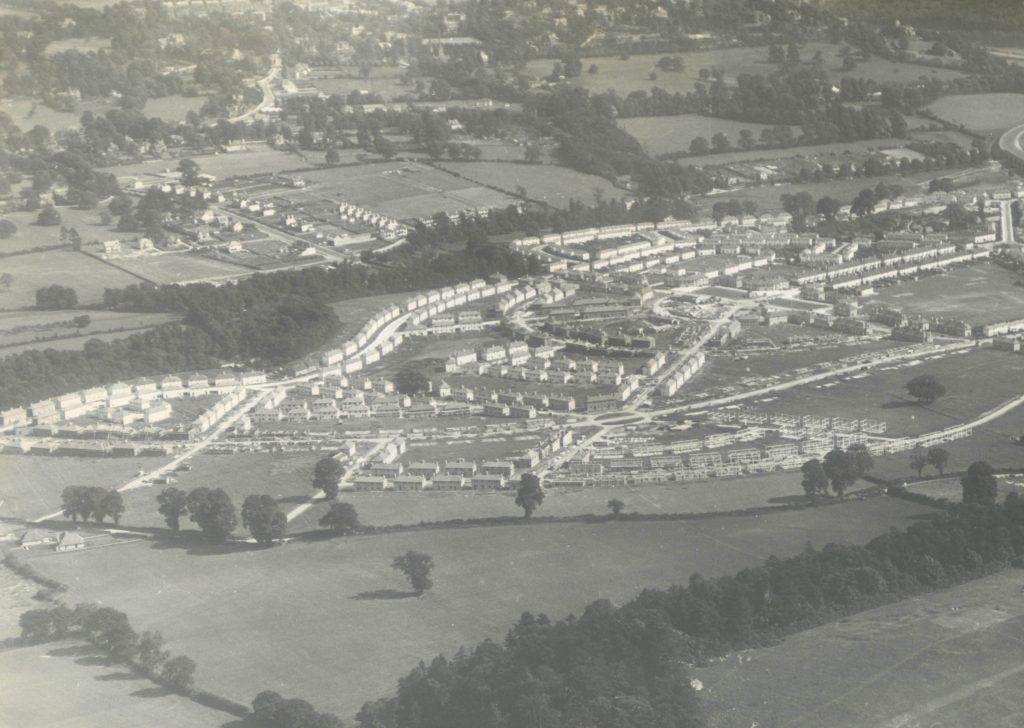
Sea Mills Garden Suburb during construction in the 1920s looking southwards with Kingsweston Hill in the right-foreground.
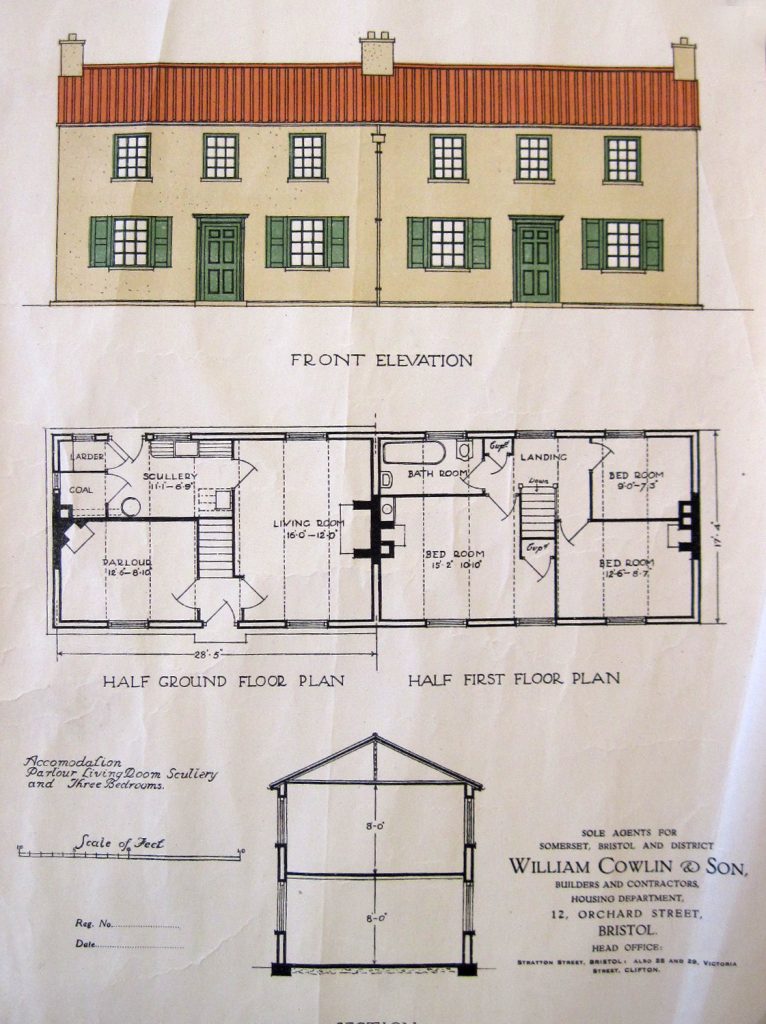
One of the house types that Philip Napier Miles was required to approve the design of.
In June 1919 the architect of the social reforms that had enabled the foundation of Sea Mills, Christopher Addison himself, cut the first sod on Sea Mills Square and symbolically planted the ‘Addison’s Oak’. The plans closely followed the Garden City principles, applied to a suburb, ensuring generous green spaces, civic, educational and social buildings planned as a unified and integrated whole. Miles further augmented the new suburb with the gift of open spaces, and the donation of Shirehampton Park to the National Trust for the enjoyment and recreation of the new residents.
In this Centenary year for Sea Mills it should not be underestimated the vision of men and women to provide humane, healthy, and dignified for their fellows. Amongst those people we should remember Philip Napier Miles and his devotion to the Garden City ideals; Sea Mills Garden Suburb must have given him pleasure as the most complete realisation of the dream he harboured for two decades.
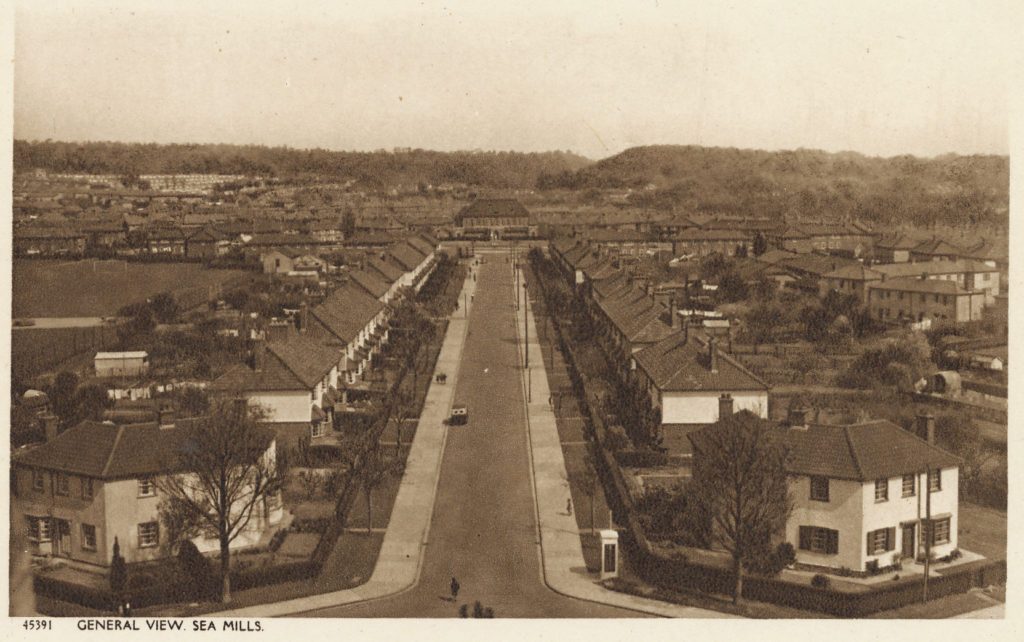
A view looking up St Edith’s Rd from the church of the same name, and towards the central square of Sea Mills.
The Centenary of Sea Mills is being celebrated by the Sea Mills 100 project with a series of events throughout the year, and the launch of a micro museum in a restored telephone box in the village centre. More information can be found here. For more information on Sea Mills suburb the Conservation Area Statement provides more detail.

